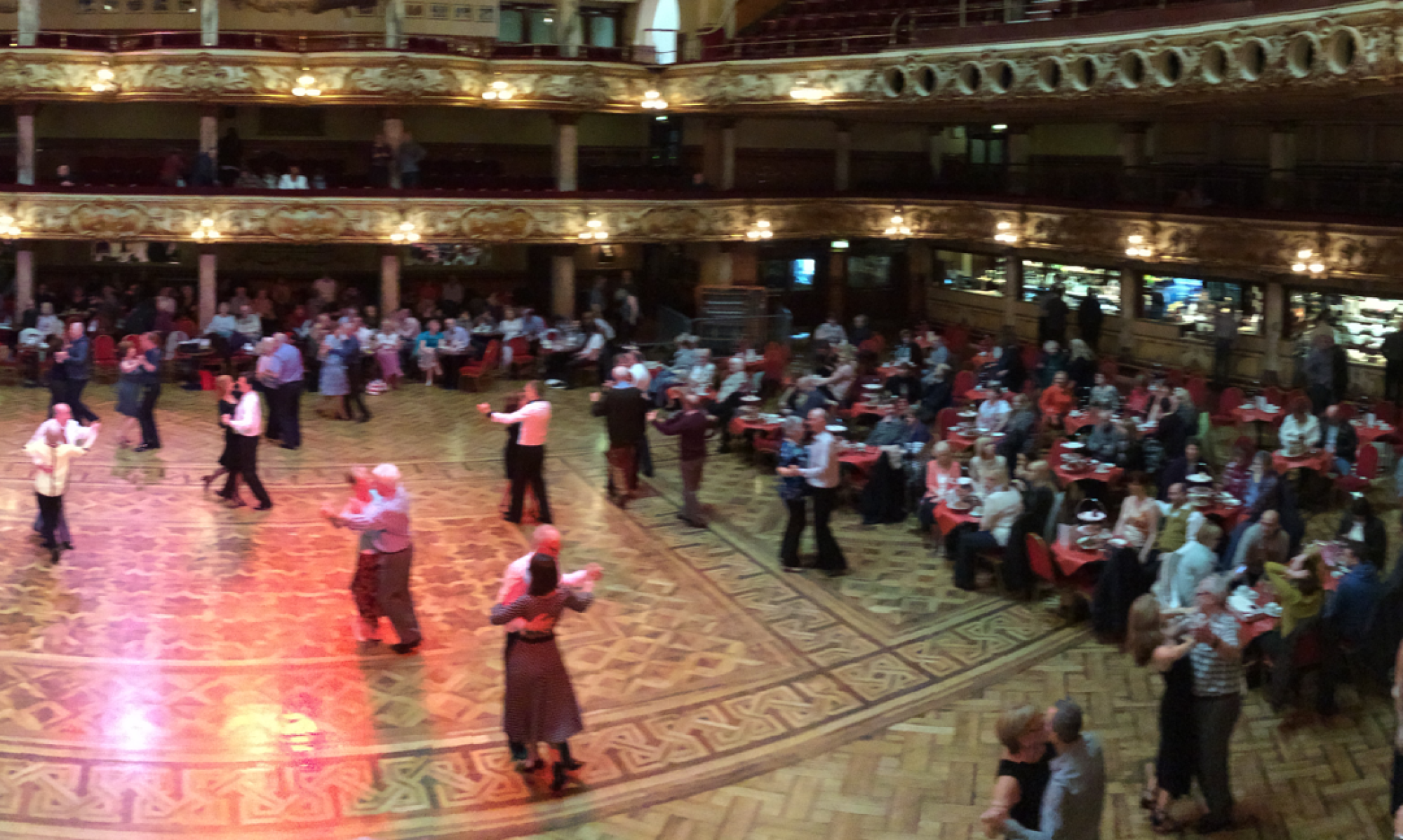So now that you’ve started to build your dance repertoire, you might notice that you’re actually starting to get ‘danced out’. You watch with envy those guys and gals who seem to be able to shake it non-stop – and they’re still there when you’re packing up your shoes. How can you raise your dance stamina to keep up?
There’s two quick answers: improve your physical fitness, and improve your dance efficiency.
We are talking about dance stamina, which is very different from strength.
The latter requires a very different approach.
1. Practice!
I can hear your groans from here, But it’s true – if you want to build your endurance, practicing your steps at the intensity that tires you regularly will allow you to do it longer and longer – and naturally you’ll get better at the steps as well.
Pic of muscles: ‘Also, this looks nice.’
Make sure you pace yourself. The fastest way to improve is to set an intensity that stops short of pulling muscles or frustrating yourself.
2. Less is more
Most dancers start out doing everything too much: too much hips, too much arm styling, too much turning… You get the idea. All that extra energy just drains your dance stamina, and throws off your partner as well. See if you can relax your body a little more, do a little less, and still move with your partner.
3. Consider a dance fitness class
Many studios teach dance classes that focus on burning calories. For example, Joy of Dance teaches Zumba, Nia, and Ginga classes, which vary in their intensity. You might even try a style like capoera that can’t help but strengthen your body simply because it’s the nature of the dance.
4. Hang From the Joints
Try this: position yourself in a dance frame with an imaginary partner.
Now, relax as much as you can without loosing the frame. You’ll find it a lot easier to hold the position, while spending a minimal amount of energy holding your body at the right angles. Practice dancing like this, alone and with a partner, to keep soft and save your dance stamina.
5. Fill the Music
In ballroom, movements should be spread out to fill each beat. For instance, if you begin a waltz reverse turn by rotating your body, hips and feet leftward on count 1, if will be MUCH easier to complete the turn on steps 2, 3. It’s a smoother lead too, which will score you more dance partners.
Other movements, like open breaks or contra checks, can save dance stamina if the lead is initiated a fraction of a second earlier – it’s all about being comfortable enough with your steps to anticipate the action just before it happens.
I’m not giving followers permission to back-lead here. But be ready for these subtle lead changes, and you will work with your partner – not against him.
In our last article, we covered the nuts and bolts of rise and fall – what it means, as well as general tips on how to do it. But you may still be wondering how to apply it in your general dancing. The following exercises will help you improve and master ballroom rise and fall on the dance floor.
Continue reading “Ballroom Rise and Fall Part Two: 3 Practical Exercises”
Last week we played with some simple exercises to get your hips moving as you travel in different directions. As these exercises start to sink in, you can apply some of the following techniques to smooth out the movement.
Continue reading “Cuban Motion (Latin hip action) Explained, Part Two”
On the dance floor, what you do isn’t nearly as important as how you do it. At the Latin clubs, capturing the sexy Latino rhythm means using Cuban motion. Lets be clear: both men and women use Cuban motion, although women tend to be more noticeable in their movement due to their wider hips and narrower waist. Here’s five exercises to get you started. Continue reading “Cuban Motion (Latin hip action) Explained, Part One”
Last time, we looked at our tendency to multi-task in our dance practice, with sub-par results. We also started to examine how to counter this habit, and focus on improving one technique at a time. Let’s continue with that today.
Continue reading “Learn Ballroom Dancing Faster – Part Two”
Previously, we discussed some of the assumptions leaders make that can hold back their ability to effectively connect with their partner. Now it’s time to look at the techniques that actually help you get your partner from point A to point B – and keeping her smiling on the way.
Continue reading “Leading VS Following – Part Four”
If you’re dancing for fun, the answer to ‘how often should I practice my dancing?’ is really up to you. But say you’re not satisfied with that. Say you want to get the most out of your lessons and not risk lagging behind in class. For my private-lesson students, I always advise practicing between lessons, so when they come back they are more comfortable with the material and we can move on to more exciting steps and technique.
In this article, we look at the feasibility of practicing on a busy schedule, how long you should practice, and even how to practice more effectively. Continue reading “How Often To Practice Your Dancing (And Do You Have to?)”
Not all music is created equal – at least some of the time, finding the rhythm in ballroom dance music is tough. But if you’re new to the scene, what do we mean when we talk about rhythm anyways? And how can we get consistent enough to follow it, no matter the song? Continue reading “Finding the Rhythm in Ballroom Dance Music
